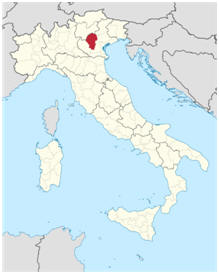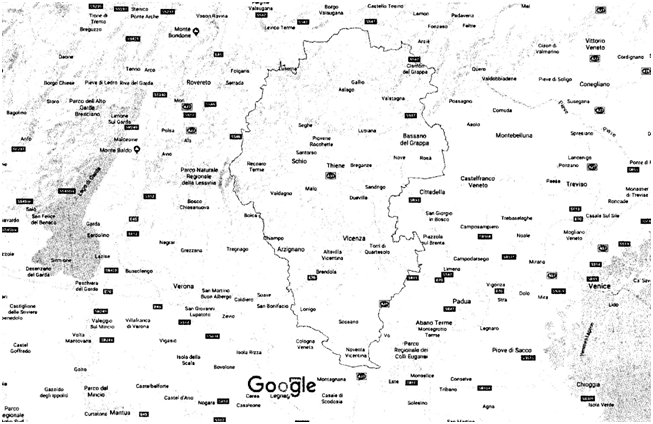
Chapter 1. Introduction
“John Ullian and Linda Ferraro:
Roots and Legacy
www.Ullian.org March 2018”
Purpose
This report was authored by grandchildren of John Ullian (1890-1970) and Linda Ferraro (1895-1929) to share with their descendants some of the frustratingly little information available about them, their roots, their siblings, and their legacy: their children. We have included family stories, photos, and documents. This story reflects what we have learned, and we hope others in the family will also learn from our work. We hope also that you will add to this work by sharing what you know. Please contact us with corrections as well as additional facts and family stories.
Our Primary Subjects
Giovanni Battista [John] Ullian and Linda Ferraro were just 2 of some 4,000,000 Italians who left the difficult conditions of Italy between 1880 and 1924 to find a better life in the U.S. – as immigrants from around the world still do today. The experiences of John and Linda were undoubtedly similar in broad terms to those of many immigrants of their day, but looked at more closely, each immigrant had a unique story. Each individual immigrant, including John and Linda, helped shape the lives of their descendants. As a whole, the immigrants of their era helped shape today’s America.
John came to the U.S. in 1908, initially joining an older brother as a coal miner in Iowa. As an infantryman in the U.S. Army in World War I, he was gassed in the Argonne Forest and bayoneted in combat. Very shortly after Linda’s arrival in 1920, they were married. They had 6 children by mid-1928, while he worked as a landscape gardener in the northern Chicago suburbs. The Ullian family’s lives were about to take a turn, when in March 1929 their youngest daughter died at 9 months of age. Linda died 4 weeks later. The Stock Market Crash and the Great Depression that followed had to have greatly impacted John’s livelihood, and soon he was unable to care for his 5 remaining children as a single father. First at the Angel Guardian Orphanage in Chicago, then as wards of the state sent to the Illinois Soldiers’ and Sailors’ Children’s School in Normal IL, John and Linda’s children grew up with little contact with their father – but they have told us that their lives in those institutions were better than the lives of many children in those days. John, like many men of his era, had to hit the road and find work where he could. He seems to have spent most of the 1930s working in Texas. In the mid-1940s John re-married in Joliet IL and was again united with his children, who successfully raised their own families.
Tips for the Reader
This report is composed primarily of five sections: The first includes the table of contents, this introduction, and a brief summary of each chapter. The second (chapters 3 to 12) chronologically addresses the life of our grandfather John Ullian and his family. The third (chapters 13 to 14) addresses his brother Romano as well as other families with the Ullian surname. The fourth (chapters 15 to 17) focuses on our grandmother, Linda Ferraro, her parents, and her siblings. The fifth consists of additional material (Appendix A to H).
While our primary subjects are John Ullian and his first wife Linda Ferraro, we include information on other individuals, places, and events to help put John and Linda into some context. Basic information on the ancestry of John and Linda is provided. Information on family members of his generation will usually focus on basic genealogical facts (birth, marriage, children, death) and on information that help to tell John’s story. Selected information will be provided on the lives of John and Linda’s sons and daughters. For privacy and security purposes, information on John and Linda’s grandchildren and others of their generation will typically be very limited.
We will use the “Americanized” names when such were typically used by the individuals in the U.S. – e.g., John instead of Giovanni – except when quoting directly from documents. We will at times use both forms of the name – e.g., Giovanni/John, or Giovanni [John]. In earlier times, spelling of names was more “casual” than today, so variations can be expected. We have tried to provide the original spellings in primary documents, but in general use what we consider the most appropriate spelling of both first names and surnames.
When we believe a word in a primary or secondary document, or something said by a source, is incorrect, or merits explanation, we will generally add the correction or explanation in italics within brackets.
Following genealogical research customs, we will generally use the wife’s maiden name even after marriage (or include it parenthetically), and will use the day month year format for dates – e.g., 6 Sep 1890.
A reference to “Grandpa” will be to the primary subject of this report, John Ullian (1890-1970), unless otherwise indicated.
We will often use The Home or ISSCS to indicate the Illinois Soldiers’ and Sailors’ Children’s School in Normal IL, The Orphanage for the Angel Guardian Orphanage in Chicago IL, and The Farm for the property at 1604 Marcella Ave. in Joliet IL.
When mentioning a U.S. place name, we will typically use the format of town/city, county, state – e.g., Joliet, Will, Illinois – at least the first time it is used. Shorter versions may be used later – e.g., Joliet, or Joliet IL. The standard designation for Italian place names is commune (village/town/city), provincia (province), regione (region) – e.g., Salcedo, Vicenza, Veneto; or using standard Italian abbreviations, Salcedo, VI, VE. Sometimes the region is omitted. When an Italian place name alone is given in this report, it is to be understood that it is in Vicenza province, Veneto region, Italy.

Province of Vicenza (in red) [From Wikipedia.com]


We have relied on a combination of primary sources (including government agencies and organizations), secondary sources (most recently including material accessed through Ancestry.com, FamilySearch.com, and Newspapers.com), and information and photos shared by family members. Primary documents in Italy, especially church records, were examined through a contract with the company My Italian Family, LLC.
Information that we include from My Italian Family, LLC, will often consist of a scan of an original church record [with varying degrees of legibility] followed by their researcher’s notes interpreting and sometimes commenting on that record.
Errors and Omissions
It is inevitable that errors exist in this report. We just don’t know where! Please let us know. And let us know what we have improperly omitted. We look at the release of this report as an impetus for those who have additional information on this family to inform us, so we can improve this family history.
Contact Information
Linda Wysocki (daughter of Livia A. Ullian and Donald L. French) lindawysocki@yahoo.com
John A. Ullian Jr. (son of John A. Ullian and Mildred M. Huffington) JAUllian@gmail.com
David Ullian Larson (son of Mary K. Ullian and David R. Larson) DULarson@bellsouth.net
Availability
It is our intent to keep the latest version of this report available at www.Ullian.org – both as a single file containing the whole report and as files for individual chapters/appendices. Additional relevant material not yet incorporated into the most recent full version may also become available on this website.
If we are able to write a “new and improved” version of this work, chances are that we will provide more, and more specific, citations for the sources of our information. (We know we should have been better at this!)
Copyright, Etc.
This work is protected by copyright law. Our understanding of the complex world of copyright law includes the recognition that individual facts cannot be copyrighted, but the ways in which they are expressed are protected by law. We invite you to use the facts provided in this work, but contact an author for permission to quote more than minimally from the text. The documents presented in this work are for genealogical and family history purposes only – other uses are not permitted. This work or its components may not be sold for profit.